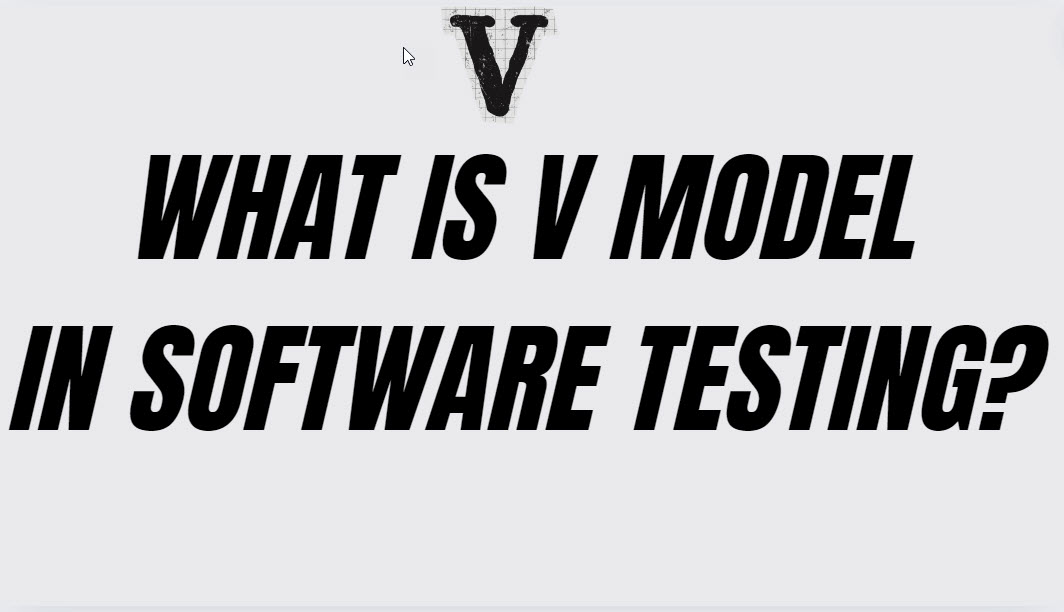As a software testing professional, I’ve found the V Model invaluable for ensuring quality throughout the development lifecycle. In this post, I’ll explain the V Model’s structure, its benefits, and how you can apply it to your projects.
What is the V Model?
The V Model is a software development and testing approach that emphasizes the relationship between each development lifecycle phase and its corresponding testing phase. It’s called the “V” Model because of its V-shaped structure, with development stages on the left side and testing stages on the right.
Structure of the V Model
The V Model consists of several stages
Left side (Development)
- Requirements
- System Design
- Architecture Design
- Module Design
- Coding
Right side (Testing):
- Unit Testing
- Integration Testing
- System Testing
- Acceptance Testing
Maintenance
Each development stage on the left corresponds to a testing stage on the right, forming the “V” shape.
Benefits of the V Model
- Early detection of defects
- Clear traceability between requirements and tests
- Improved project management and control
- Enhanced test planning and execution
Check out What is use case in software testing
Applying the V Model in Practice
Let’s walk through each stage of the V Model using a real-world example: developing a mobile banking app for a major US bank, let’s call it “USABank.”
- Requirements and Acceptance Testing
In this phase, we gather and document all requirements for the USABank mobile app. These might include:
Secure login with biometric authentication
Real-time account balance updates
Bill payment functionality
Mobile check deposit
Corresponding acceptance tests would verify that each feature works as expected from the user’s perspective.
2. System Design and System Testing
Here, we design the overall system architecture for the USABank app. This might involve deciding on a client-server model, choosing between native and hybrid app development, and planning for scalability.
System testing would then verify that all components work together correctly, testing end-to-end scenarios like completing a bill payment or depositing a check.
3. Architecture Design and Integration Testing
At this stage, we define how different modules of the USABank app will interact, such as how the authentication module communicates with the backend server or how the bill payment module integrates with the bank’s existing payment systems.
Integration testing would focus on these interactions, ensuring that data flows correctly between modules and that they work together seamlessly.
4. Module Design and Unit Testing
Here, we design individual app modules or components. For the USABank app, this might include designing the login screen, the account summary page, or the bill payment form.
Unit testing would then verify each of these components in isolation. For example, we might test that the login screen correctly handles various input scenarios, including valid and invalid credentials.
5. Coding and Unit Testing
Finally, we implement the code for each module. As we code, we continuously perform unit testing to catch and fix bugs early.
Check out What is API Integration Testing
Implementing the V Model: Best Practices
Start test planning early: Begin designing tests as soon as requirements are defined.
Maintain traceability: Ensure each test can be traced to a specific requirement.
Automate where possible: Use test automation tools to speed up repetitive tests.
Involve testers throughout Don’t wait until the end to bring in the testing team.
Conclusion
The V Model provides a structured approach to software development and testing that can significantly improve the quality of your products. Linking each development phase with its corresponding testing phase ensures that testing is an integral part of the development process, not just an afterthought.
In my experience working on projects like the USABank mobile app, the V Model has proven invaluable in catching defects early, improving communication between development and testing teams, and ultimately delivering higher-quality software to our users.
You may also like following the articles below.

My name is Madhu, and I’m a certified Test Consultant with more than 16 years of hands-on experience developing and maintaining manual and Test Automation in the Software industry. I have experience with automation tools such as Selenium, Katalon Studio, etc.
